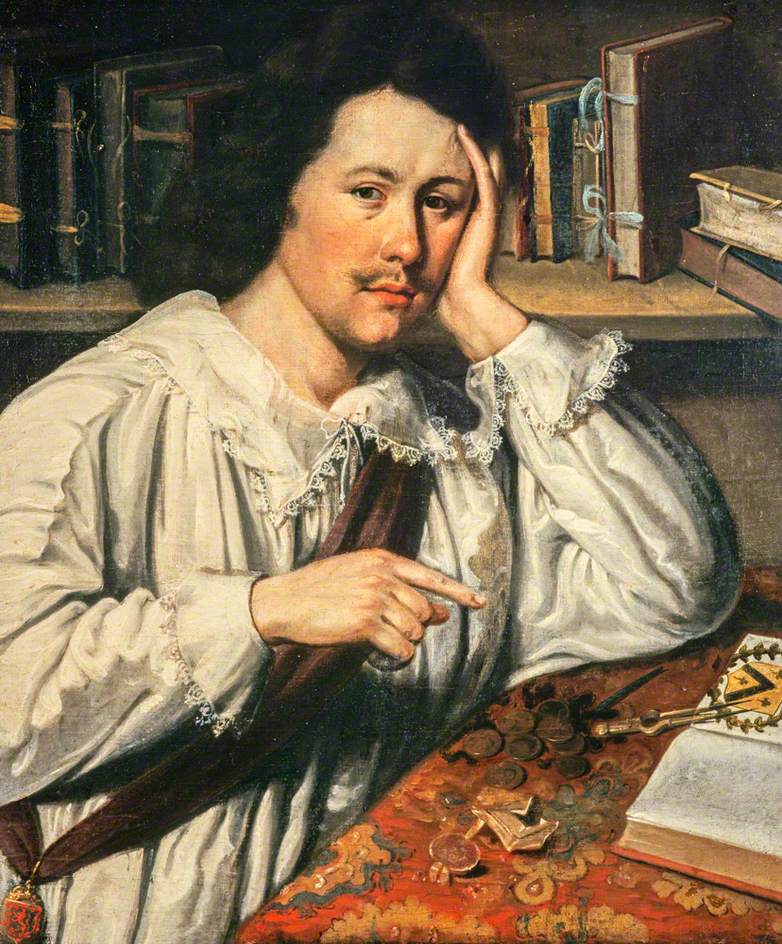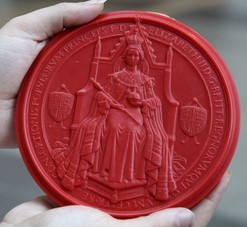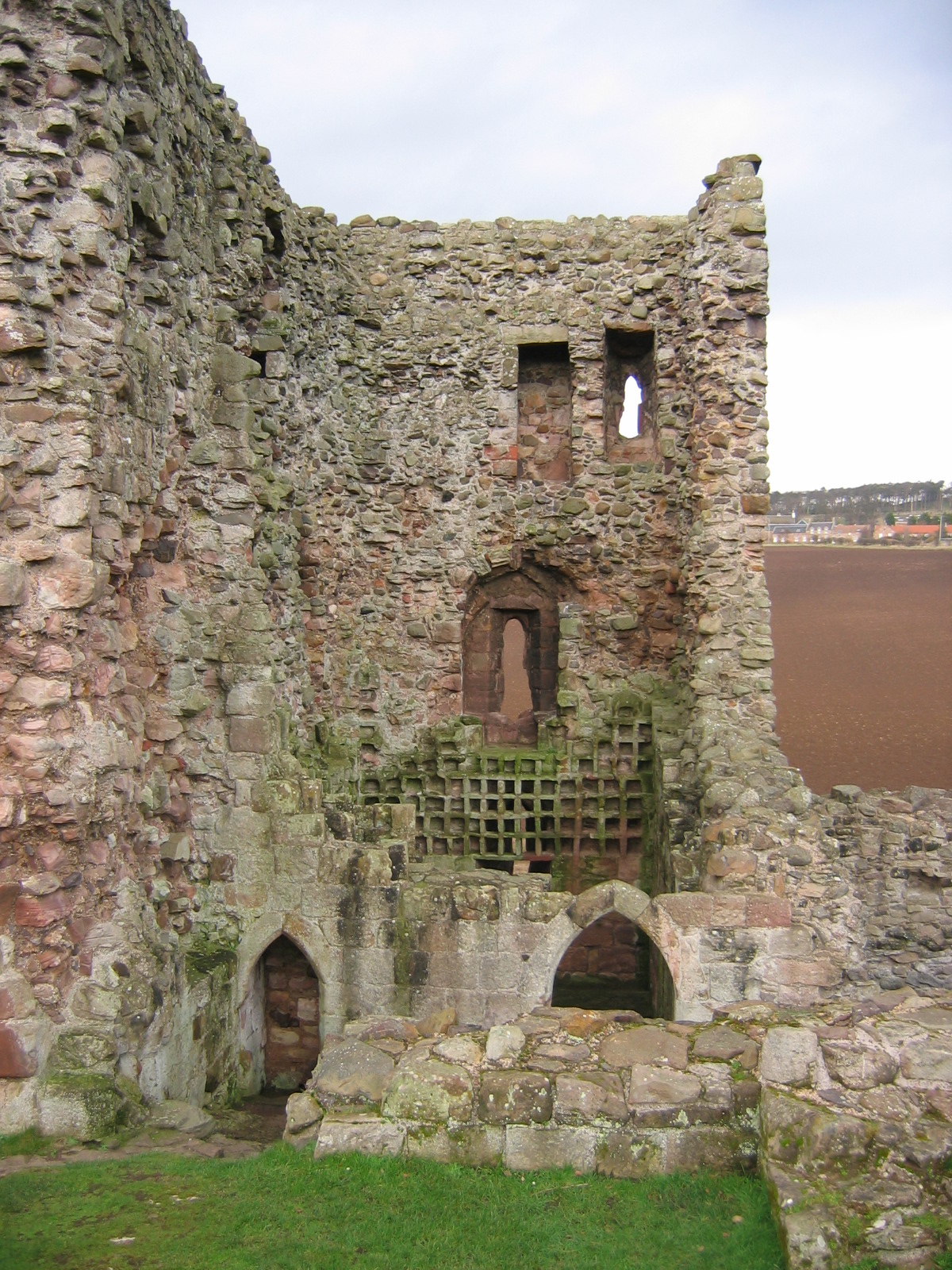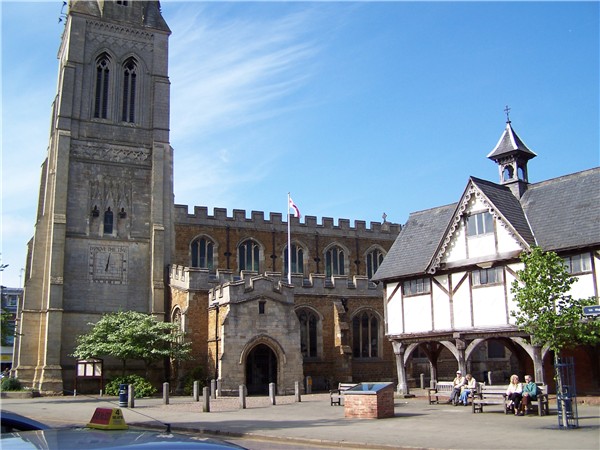|
Battle Of Nesbit Moor (1402)
The Battle of Nesbit Moor (or Nisbet Muir) was a small but significant clash between Scottish and English forces in the borders area north of the River Tweed. Specifically this clash took place on the Kimmerghame Estate in a field now named ''Slaughter Field''. The estate is in the possession of the Swinton Family. In 1402, Scottish nobles launched a coordinated invasion of Northern England. In the initial foray, some 12,000 Scottish troops crossed into Cumberland and looted areas near Carlisle. On 22 June at Nisbet, Berwickshire, the forfeited George de Dunbar, 10th Earl of March successfully led 200 English soldiers, mainly drawn from the garrison at Berwick-upon-Tweed, against 400 Scots returning from a raid on Northumberland. Henry IV of England was given news of the skirmish while at Harborough on 30 June, and delayed plans to suppress a Welsh rebellion so that he could deal with the large-scale Scottish invasion that was then imminently expected. In the autumn a large ... [...More Info...] [...Related Items...] OR: [Wikipedia] [Google] [Baidu] |
Anglo-Scottish Wars
The Anglo-Scottish Wars comprise the various battles which continued to be fought between the Kingdom of England and the Kingdom of Scotland from the time of the Wars of Independence in the early 14th century through to the latter years of the 16th century. Although the Wars of Independence, in which Scotland twice resisted attempted conquest by Plantagenet kings of England, formally ended in the treaties of 1328 and 1357 respectively, relations between the two countries remained uneasy. Incursions by English kings into Scotland continued under Richard II and Henry IV and informal cross-border conflict remained endemic. Formal flashpoints on the border included places remaining under English occupation, such as Roxburgh Castle or the port of Berwick-upon-Tweed. Roxburgh was recaptured by the Scots in 1460 under Mary of Guelders after the death of James II in the same campaign. Similarly, they captured Berwick in 1461 in exchange for support to the Lancastrians. Berwick had c ... [...More Info...] [...Related Items...] OR: [Wikipedia] [Google] [Baidu] |
Nisbet, Berwickshire
Nisbet House is a 17th-century mansion in the Scottish Borders. It is located on the north side of the Blackadder Water, south of Duns, in the Merse, a low-lying part of the former county of Berwickshire. It was built in about 1630 by Sir Alexander Nisbet, ancestor of the heraldic authority Alexander Nisbet (1657–1725). Architectural evidence suggests that the building incorporates, at its eastern end, a square pele tower that was the former house. The house is protected as a category A listed building. History The Nisbet family built two fortified houses or pele towers in the 12th century, East Nisbet and West Nisbet. East Nisbet, now known as Allanbank, was located on the Blackadder Water near Allanton, although the original tower no longer exists. Wester Nisbet remains, and was extended in the 1630s to form the bulk of the present house. The laird at the time was Sir Alexander Nisbet of that Ilk (c. 1580–1660). Sir Alexander Nisbet overextended his finances in suppor ... [...More Info...] [...Related Items...] OR: [Wikipedia] [Google] [Baidu] |
Sir James Balfour, 1st Baronet
Sir James Balfour, 1st Baronet of Denmilne and Kinnaid ( – 1657), of Perth and Kinross, Scotland, was a Scottish annalist and antiquary. Biography James Balfour was a son of Sir Michael Balfour of Denmilne, Fife, and Joanna Durham. Balfour was well acquainted with Sir William Segar and with William Dugdale, to whose ''Monasticon'' he contributed. He was knighted by King Charles I in 1630, was made Lord Lyon King of Arms in the same year, and in 1633 baronet of Kinnaird. He was arbitrarily removed from his office of Lord Lyon by Oliver Cromwell and died in 1657. Some of his numerous works are preserved in the Advocates' Library at Edinburgh, together with his correspondence, from which rich collection James Haig published Balfour's ''Annales of Scotland'' in four volumes (1824–1825). James Maidment James Maidment (1793 in London – 1879 in Edinburgh) was a British antiquary and collector. He passed through Edinburgh University to the Scottish bar, and was chief a ... [...More Info...] [...Related Items...] OR: [Wikipedia] [Google] [Baidu] |
Alexander Nisbet
Alexander Nisbet (bapt. 23 March 1657; died 7 Dec. 1725) was a Scottish lawyer and antiquarian. He is remembered for his works on the subject of heraldry, which are generally considered to be some of the most complete and authoritative ever produced in the British Isles. Life Nisbet was born in Edinburgh, the third of ten children of Adam Nisbet WS and his wife Janet, only daughter of Alexander Aikenhead WS. Adam, and later Alexander, were chiefs of the ancient Nisbet family, of Nisbet in Berwickshire; however, the family had recently lost much of their wealth due to their zealous support of King Charles in the civil war, and had been forced to sell their ancestral estate. In his ''Essay on Additional Figures and Marks of Cadency'', Nisbet remarks that he "had a very early inclination to the study of herauldry, and when a boy ... looked on its figures with wonder, and often wish'd to know their names and signification." Nisbet matriculated at Edinburgh University in 1675, ... [...More Info...] [...Related Items...] OR: [Wikipedia] [Google] [Baidu] |
Fordun
John of Fordun (before 1360 – c. 1384) was a Scottish chronicler. It is generally stated that he was born at Fordoun, Mearns. It is certain that he was a secular priest, and that he composed his history in the latter part of the 14th century. It is probable that he was a chaplain in St Machar's Cathedral of Aberdeen.William Ferguson, ''The identity of the Scottish nation: an historic quest,'' Edinburgh University Press, 1998, The work of Fordun is the earliest attempt to write a continuous history of Scotland. Fordun undertook this task because his patriotic zeal was roused by the removal or destruction of many national records by Edward III of England. He travelled across England and Ireland, collecting material for his history. Collectively, this work, divided into five books, is known as the '' Chronica Gentis Scotorum.'' The first three are unverified historically, which therefore casts doubt on their accuracy. Yet they also form the groundwork on which Boece an ... [...More Info...] [...Related Items...] OR: [Wikipedia] [Google] [Baidu] |
Falkland Palace
Falkland Palace, in Falkland, Fife, Scotland, is a royal palace of the Scottish Kings. It was one of the favourite places of Mary, Queen of Scots, providing an escape from political and religious turmoil. Today it is under the stewardship of Ninian Stuart, who delegates most of his duties to The National Trust for Scotland. The Chapel Royal in the Palace is dedicated to Thomas the Apostle, and is also open to the public and reserved for Catholic worship. History Early years A hunting lodge existed on the site in the 12th century. The lodge was expanded in the 13th century and became a castle which was owned by the Earls of Fife – the famous Clan MacDuff. The castle was built here because the site sits on a slight hill which could be defended. The surrounding land eventually became the Palace gardens. There was a great oak wood to the north between the royal stable and the River Eden, with many groves merging into the surrounding parkland. Timber was occasionally cut ... [...More Info...] [...Related Items...] OR: [Wikipedia] [Google] [Baidu] |
Great Seal Of Scotland
The Great Seal of Scotland ( gd, Seala Mòr na h-Alba) is a principal national symbol of Scotland that allows the monarch to authorise official documents without having to sign each document individually. Wax is melted in a metal mould or matrix and impressed into a wax figure that is attached by cord or ribbon to documents that the monarch wishes to make official. The earliest seal impression, in the Treasury of Durham Cathedral, is believed to be the Great Seal of Duncan II and dates to 1094. The current keeper of the Great Seal of Scotland is the First Minister of Scotland and it is considered as one of the highest honours of that office. History The chancellor had the custody of the King's Seal. Strictly, the continuation of the Great Seal of Scotland was guaranteed by the Treaty of Union which provided that "a Seal in Scotland after the Union be alwayes kept and made use of in all things relating to private Rights or Grants, which have usually passed the Great Seal of ... [...More Info...] [...Related Items...] OR: [Wikipedia] [Google] [Baidu] |
Hailes Castle
Hailes Castle is a mainly 14th century castle about a mile and a half south-west of East Linton, East Lothian, Scotland. This castle, which has a fine riverside setting, belonged to the Hepburn family during the most important centuries of its existence. Since 1926, it has been the subject of a state-sponsored guardianship agreement, which is now under the auspices of Historic Environment Scotland as a scheduled monument. It is open to the public without charge at all reasonable times. Proprietors The castle was founded as a fortified tower house by Hugo de Gourlay before 1300, making it one of the oldest constructions of its kind in Scotland. The superiority of the lands was held by the Earls of Dunbar and March. The de Gourlays, a Northumbrian family, supported the English in the Wars of Independence, and their land was forfeited by order of the Scottish Crown. Hailes Castle and lands were then confirmed upon another Northumbrian, Sir Adam de Hepburn (d. before 1371), who, ... [...More Info...] [...Related Items...] OR: [Wikipedia] [Google] [Baidu] |
Battle Of Humbleton Hill
The Battle of Holmedon Hill or Battle of Homildon Hill was a conflict between English and Scottish armies on 14 September 1402 in Northumberland, England. The battle was recounted in Shakespeare's ''Henry IV, part 1''. Although Humbleton Hill is the modern name of the site, over the centuries it has been variously named Homildon, Hameldun, Holmedon, and Homilheugh. Background During the time leading to the repudiation of the Truce of Leulinghem, both Kingdoms began to raid the other. On 22 June 1402, a small force backed by the Scots government, returning from one such raid, was attacked and defeated by George Dunbar, the Earl of March's son, at the Battle of Nesbit Moor, at which no quarter was given. Archibald Douglas, 4th Earl of Douglas, arguably the most militarily powerful man in Scotland, and a key part of the Duke of Albany's administration, used the pretext of Nesbit Moor to lead a punitive expedition into England. With Murdoch of Fife, Albany's son, Douglas's ... [...More Info...] [...Related Items...] OR: [Wikipedia] [Google] [Baidu] |
River Wear
The River Wear (, ) in North East England rises in the Pennines and flows eastwards, mostly through County Durham to the North Sea in the City of Sunderland. At long, it is one of the region's longest rivers, wends in a steep valley through the cathedral city of Durham and gives its name to Weardale in its upper reach and Wearside by its mouth. Etymology The origin behind the hydronym ''Wear'' is uncertain but is generally understood to be Celtic. The ''River Vedra'' on the Roman Map of Britain may very well be the River Wear. The name may be derived from Brittonic ''*wejr'' (<''*wẹ:drā''), which meant "a bend" (c.f ''-gwair-''). An alternative but very problematic etymology might involve ''*wẹ:d-r-'', from a lengthened form of the |
Archibald Douglas, 4th Earl Of Douglas
Archibald Douglas, 4th Earl of Douglas, Duke of Touraine (c. 1369 – 17 August 1424), was a Scottish nobleman and warlord. He is sometimes given the epithet "Tyneman" ( Old Scots: Loser), but this may be a reference to his great-uncle Sir Archibald Douglas. Master of Douglas The eldest legitimate son of Archibald Douglas, 3rd Earl of Douglas and Joanna de Moravia of Bothwell, he was born either at Threave Castle or at Bothwell Castle c. 1369 and was known as the ''Master of Douglas'' until his accession. By 1390 he had married the Princess Margaret of Carrick, a daughter of King Robert III of Scotland. Around this time, his father bestowed upon him the regalities of the Ettrick Forest, Lauderdale and Romannobridge, Peeblesshire. On 4 June 1400, King Robert appointed him Keeper of Edinburgh Castle for life, on a pension of 200 merks a year. Rites of Passage Renewal of the Percy/Douglas feud At Candlemas 1400 George I, Earl of March and Henry 'Hotspur' Percy had en ... [...More Info...] [...Related Items...] OR: [Wikipedia] [Google] [Baidu] |
Harborough
Market Harborough is a market town in the Harborough district of Leicestershire, England, in the far southeast of the county, forming part of the border with Northamptonshire. Market Harborough's population was 25,143 in 2020. It is the administrative headquarters of the larger Harborough District. The town was formerly at a crossroads for both road and rail; however, the A6 now bypasses the town to the east and the A14 which carries east-west traffic is to the south. Market Harborough railway station is served by East Midlands Railway services on the Midland Main Line with direct services north to Leicester, Nottingham, Derby and Sheffield and south to London St Pancras. Rail services to Rugby and Peterborough ended in 1966. Market Harborough was formerly part of Rockingham Forest, a royal hunting forest used by the medieval monarchs starting with William I, whose original boundaries stretched from Market Harborough through to Stamford and included Corby, Kettering, ... [...More Info...] [...Related Items...] OR: [Wikipedia] [Google] [Baidu] |








